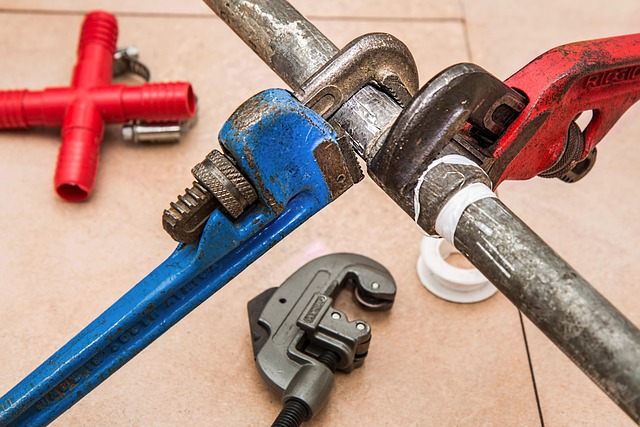Pipe leaks, common household issues causing water damage and higher bills, can be identified through signs like dripping sounds, discolored walls, ceiling stains, and mold near pipes. Causes include material deterioration, poor installation, freezing temps, and insufficient insulation leading to condensation. Effective Pipe Leak Detection Tips involve regular inspections, listening for unusual noises, monitoring water meters during off-peak hours, understanding condensation patterns, and using tools like moisture meters and thermal imaging cameras to differentiate leaks from benign condensation issues.
Are you tired of mysterious water damage? Differentiating between pipe leaks and condensation is crucial for effective home maintenance. This guide offers valuable insights into these common yet often misunderstood issues. Learn about the subtle signs of leaking pipes, from persistent drips to visible damage, and discover why condensation forms. Master Pipe Leak Detection Tips to identify problems early and prevent extensive water damage.
- Understanding Pipe Leaks: Common Causes and Signs
- Condensation: The Misunderstood Cause of Water Damage
- Effective Detection Methods for Accurate Diagnosis
Understanding Pipe Leaks: Common Causes and Signs

Pipe leaks can be a common household issue, often causing water damage and increasing your water bills. Understanding the signs and causes is crucial for timely detection and repair. One of the primary indicators of a pipe leak is a persistent dripping sound coming from your walls or ceilings. This usually occurs when pipes have developed small cracks or are corroded, allowing water to escape. Other visible signs include discolored or swollen areas on walls, ceiling stains, or mold growth near pipes—all potential outcomes of consistent water seepage.
Common causes of pipe leaks range from material deterioration over time, especially in older homes, to poor installation or freezing temperatures that expand and crack pipes. Insufficient insulation can also contribute to condensation, leading to leaks. Pipe leak detection tips include regular inspection of pipes for any signs of damage or moisture, checking for unusual noises, and monitoring water meters during off-peak hours to detect unexpected spikes in usage, which could indicate a leak.
Condensation: The Misunderstood Cause of Water Damage

Condensation is a common yet often misunderstood cause of water damage in homes, leading many to mistakenly believe it’s a pipe leak. It occurs when warm air encounters cooler surfaces, causing moisture to condense and form water droplets. This process can happen anywhere—on windows, pipes, or even walls—and is particularly prevalent during colder months when indoor heat meets exterior cold. While visible water droplets might seem like a clear sign of a leak, they could be simply the result of condensation.
Understanding condensation and its patterns is crucial for effective pipe leak detection tips. By recognizing that not all water sources are leaks, homeowners can avoid unnecessary panic and costly repairs. Regular inspection, checking for unusual moisture or water stains, and understanding environmental factors that promote condensation will help in differentiating between genuine pipe leaks and benign condensation issues.
Effective Detection Methods for Accurate Diagnosis

Effective detection methods are key to accurately diagnosing whether a problem is a pipe leak or condensation. One of the best pipe leak detection tips is to visually inspect your pipes for any signs of damage, corrosion, or moisture. If you notice dripping water, bulging pipes, or unusual vibrations, these could indicate a leak. Additionally, regular noise checks can help; leaks often produce distinct sounds as water flows through damaged pipe walls.
Using specialized tools like moisture meters and thermal imaging cameras can also aid in pipe leak detection. Moisture meters detect water vapor, helping to pinpoint exact locations of hidden leaks. Thermal imaging cameras visualize temperature variations, which can highlight areas where pipes are leaking or condensing. These methods, when combined with visual inspections, provide a comprehensive approach to accurately diagnosing and addressing pipe issues.
When it comes to identifying water damage, distinguishing between a pipe leak and condensation is crucial. By understanding the unique characteristics and causes discussed in this article—from common pipe leak causes and visible signs to the often-overlooked role of condensation—homeowners can become adept at Pipe Leak Detection Tips. Equipped with these insights, you’ll be better prepared to address water damage promptly, ensuring minimal restoration efforts and cost savings down the line.
